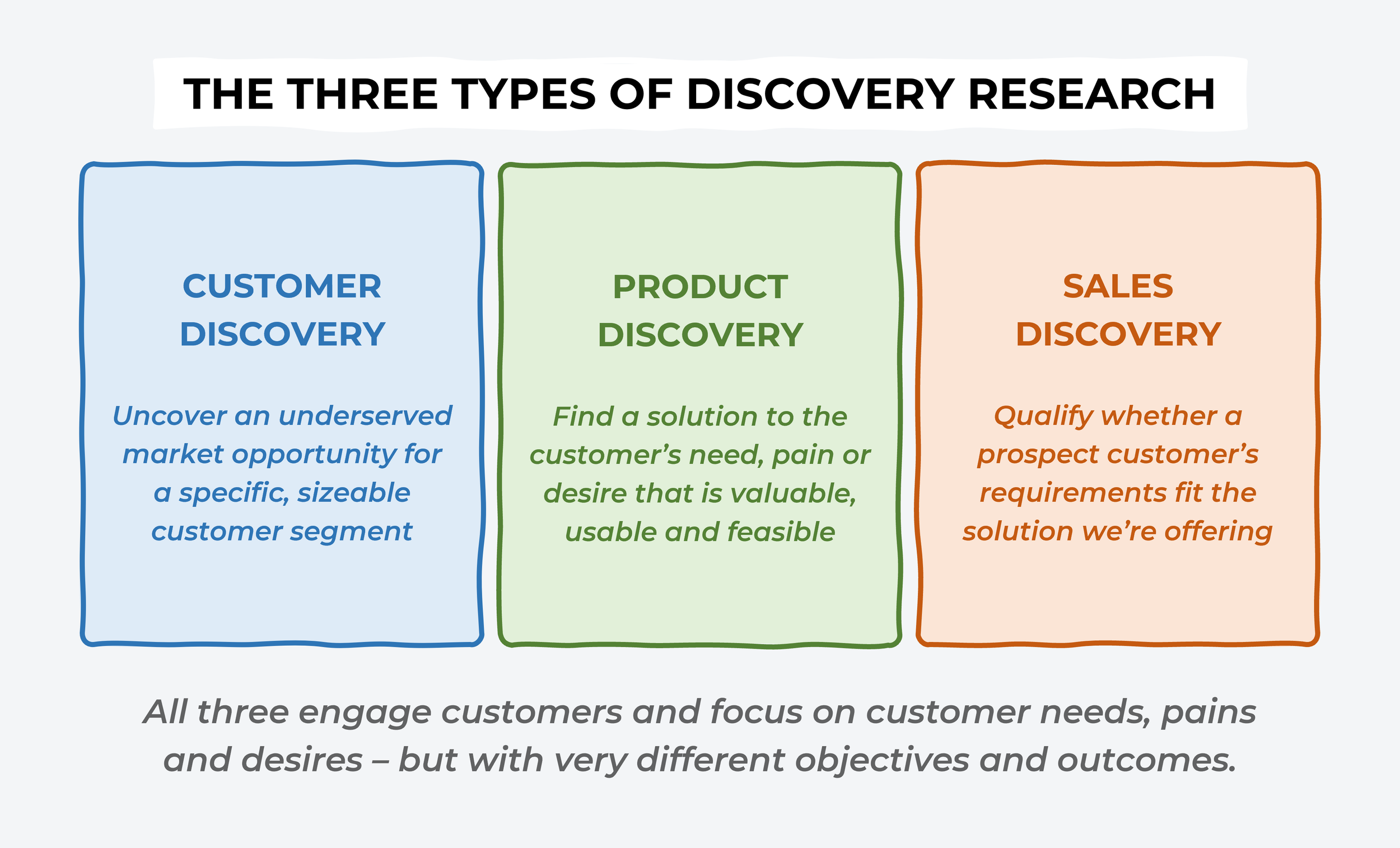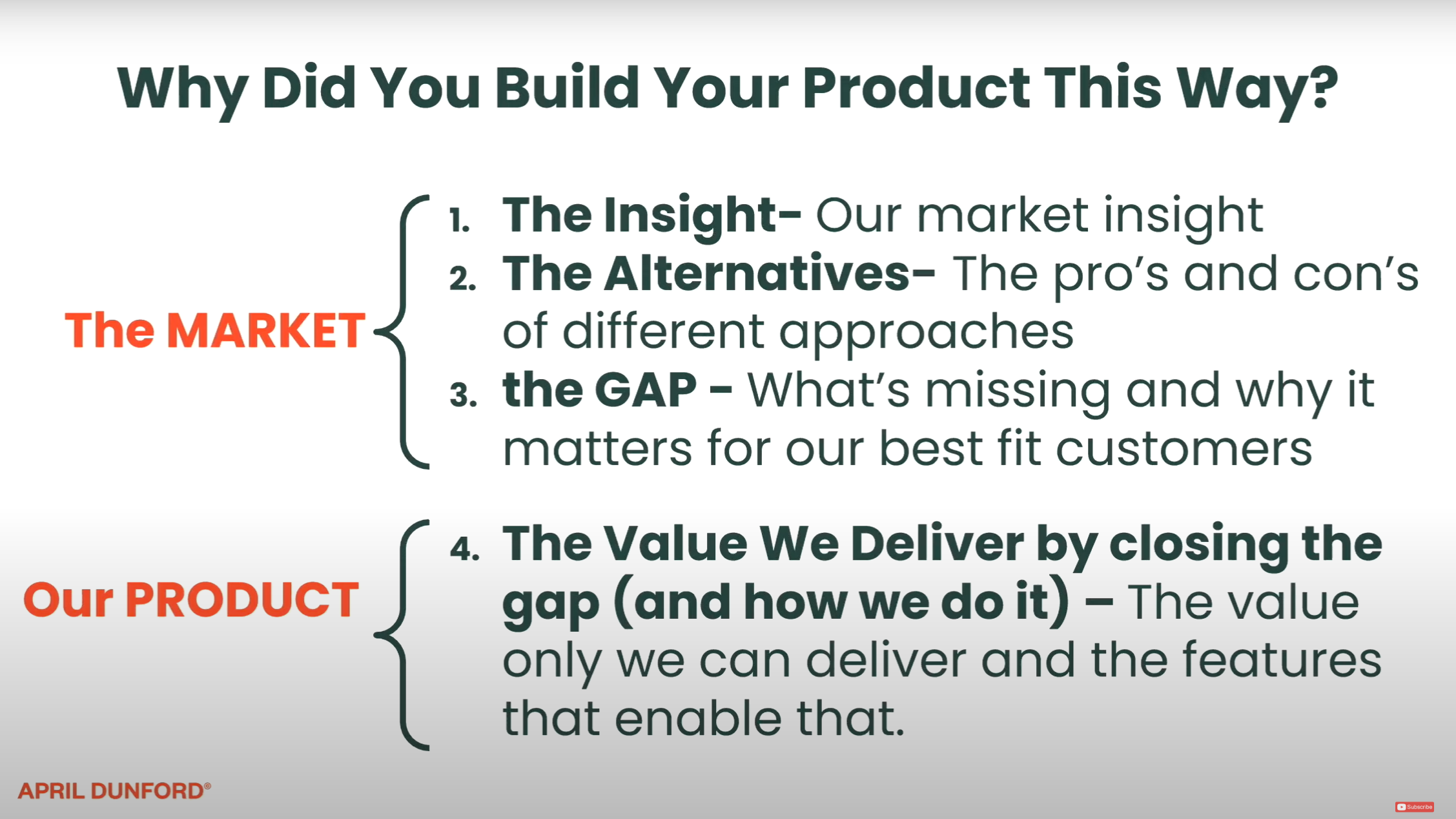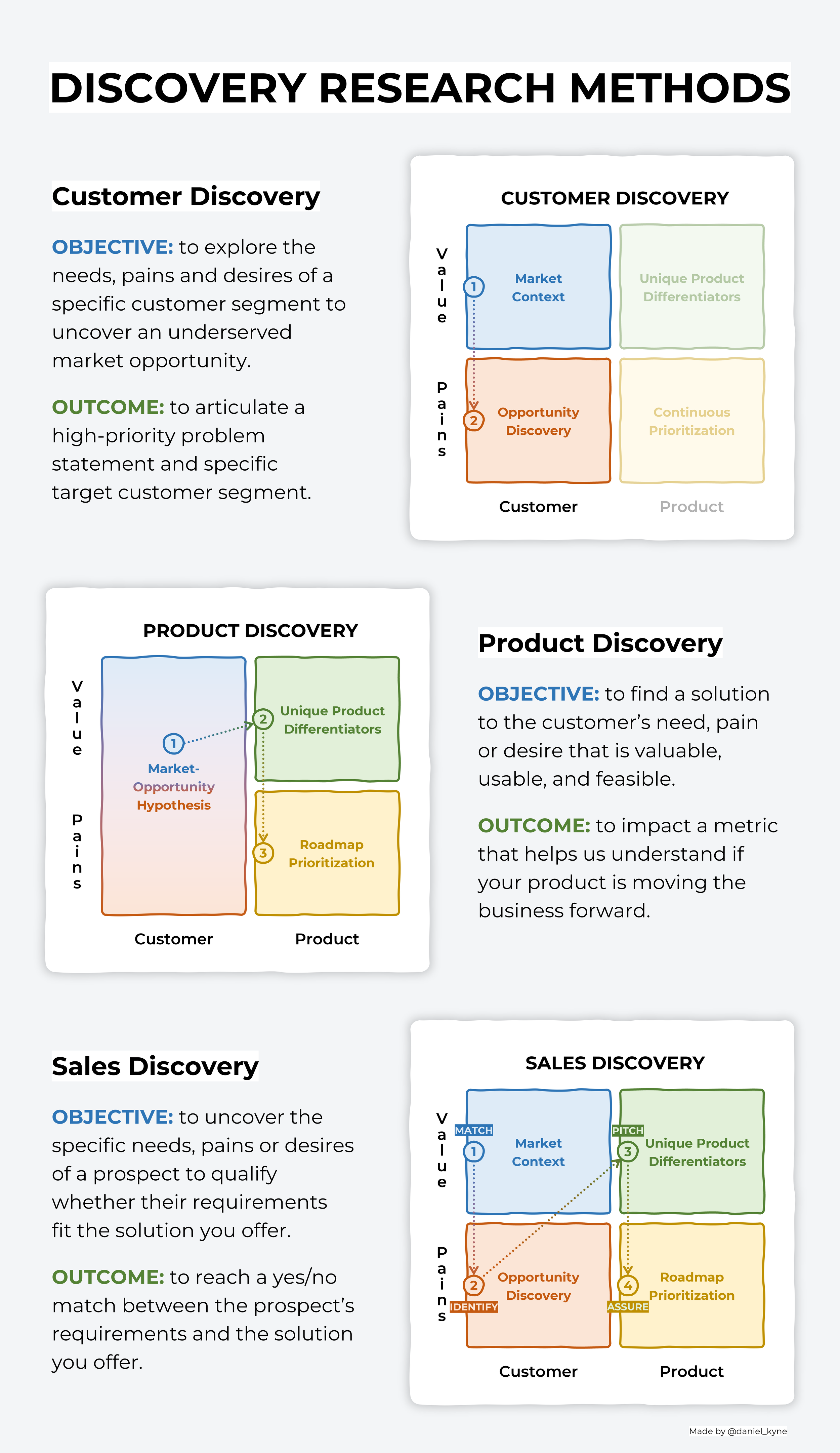The Problem With Customer Problems In B2B SaaS
I was watching April Dunford’s keynote How to Craft a Story that Sells while eating my morning porridge earlier this week (the glamorous life of a startup founder) when she described this eerily-familiar scenario:
“When I started in marketing, I was taught to start with the customer’s pain. Most of the sales reps I worked with had been trained to do that too. So in a sales meeting, they would walk in and have the pain discussion, like “what’s your pain, what are you struggling with”. Then the reps would try to build a custom pitch to respond to whatever the customer’s pain was.
On the surface this makes a lot of sense, until you actually dig into it and it’s like — dude, we have this crummy little piece of software that does two things. I don’t solve everybody’s pains! I can go in and have that nice conversation but at the end of the day I only solve these two little things, so why don’t I just lean into that?
We spend too much time on “customers have all this pain and we need to understand the pain” when most of the time our software doesn’t actually solve 9,000 pain points, it solves a very limited number of them. We act like we’re custom software houses when in fact we have a product that just does these four things and we should just focus on that.”
I’m sure I’m not the only one who has ended up 30 minutes deep in a video call discussing an entirely different customer problem than the one my product solves. Why do we do this to ourselves when it’s so obviously bad — causing scope creep for us or disappointment for the prospect (or both)?
Thankfully, April’s talk was full of solutions to help us avoid this exact problem. This post breaks down three key principles from April’s keynote to help you better use customer problems in your user research, sales and marketing work.
Principle 1. Know The Difference Between Discovery Modes
The kind of customer conversation April is talking about in her quote is called discovery, which is a fancy way of saying “researching and framing the problem space” (via NN/g). But there are a couple of different scenarios where problems are at the center of our customer conversations, which is why it’s so easy to pick the wrong type of “discovery” and end up in a dead-end conversation. Looking at a quick definition of each type, we can see they’re actually quite clearly different:
Customer Discovery explores the needs, pains and desires of a specific customer segment to uncover an underserved market opportunity.
Product Discovery aims to find a solution to the customer’s need, pain or desire that is valuable, usable and feasible (via Marty Cagan).
Sales Discovery uncovers the needs, pains and desires of a prospect customer to qualify whether their requirements fit the solution you offer.
In April’s story, the sales reps should be conducting sales discovery, but they’re acting like they’re doing customer discovery because they incorrectly think that identifying any customer problem will lead to a commercial opportunity for the company.
The same misdiagnosis is often made by early-stage founders too. When they should be in customer discovery mode identifying a high-priority problem to solve, they’re instead in product discovery mode trying to figure out how to improve their existing solution. They’ll later realize during sales discovery that they’ve built a solution to a mild inconvenience that no target customer really cares to address (all because they skipped customer discovery).
Principle 2. Be Opinionated About Your Market
“I think really good sales and marketing involves saying “look, these are your options, this is what you could do. If you think this is interesting, you should come to us because we do this stuff,” instead of saying we solve all the pains. We don’t solve all the pains. We only solve a tiny bit of the pains.” — April Dunford
The main message of April’s keynote is that we shouldn’t be afraid to tell prospects when they’re better off using our competitor’s product. You’re immersed in your product category and know a lot more about the range of available solutions than your customers do. Use that knowledge to amplify your differentiation by talking about why you built your product instead of just how you built it.
April offers a great four-step process for articulating this:
^ Screenshot from April’s keynote “How to Craft a Story that Sells” (via MicroConf)
Here’s an example of how I do this for our product OpinionX:
Insight: Product teams rely on user research to understand what customers are thinking, how they’re feeling, and what their priorities are.
Alternatives: Typeform is great for collecting simple user data during onboarding, and you can make all sorts of fancy graphs for your PowerPoint deck using tools like SurveyMonkey and Qualtrics…
Gap: But if you’re doing user research, you need to be able to measure and compare how customers think by customer segment. That’s the most important data possible — but you can’t get that from any of the usual survey tools.
Value: We built a survey tool specifically for ranking because ranking questions are the best way to understand people’s priorities. Then we give you the features to segment, map and correlate people’s ranked priorities by customer segment because that’s the data product teams actually need for their most important decisions.
To articulate this kind of market opinion, you’ve first got to nail your customer discovery research and turn your findings into unique features that give you a differentiated position (from your target customer’s perspective) in your product category. Once you’ve done all that work, the best thing you can do is shout about your opinionated view so that you stand out to potential customers. The clearer you are, the easier your sales discovery will be.
Principle 3. Say No To Custom Pitches
“We act like we’re custom software houses when in fact we have a product that only does these four things and we should just focus on that.” — April Dunford
If your prospect has a different pain to the one you’re solving, chances are you’re not talking to your target customer. But it can be hard to notice this sometimes because you did such great customer discovery research…
If you nail your research and launch your product with appealing positioning, chances are you’ll attract customers from outside your target segment too. The more enthusiastic these people are about your product, the more tempted you’ll be to expand your target customer definition.
Redefining your target customer to encompass multiple segments is a surefire mistake for early-stage products. It can feel like you’re creating a larger opportunity — and initially these extra segments might have such similar use cases that it seems like it should work in your favor — but, eventually, different customer segments require different product functionality. I learned this mistake myself the hard way, getting pulled in opposite directions until we were forced to decide which segment to prioritize.
Without a well-defined target customer segment, you’re basically forcing your sales reps to use custom pitches. One famous example of this was WeatherBill — with just a couple months of runway left, they rewrote their sales pitch and banned sales reps from talking to any segment that wasn’t their exact target customer. This course correction transformed them from a failing startup to a billion-dollar exit trajectory in a matter of weeks.
Succeeding at all three principles depends on the quality of your customer discovery
“The trick of this isn’t actually figuring out the customer’s pain — the trick is figuring out which customers have the pain that we solve and whether there are enough of them to build a business on. If there isn’t, we need to go back to the drawing board.” — April Dunford
Customer discovery is the foundation that successful sales, marketing and product teams are later built upon. You can only create the right product and match that product to the right customers if you understand the market-level problem you’re trying to address in the first place.
The best way to succeed at customer discovery is to know what a good outcome looks like. The objective of customer discovery is to “uncover a high-priority problem that a significant segment of specific customers are struggling to solve today.”
“High-priority problem” → enough of a pain that they’re actively searching for solutions.
“Significant segment” → there are enough customers to justify building a solution in the first place.
“Specific customers” → you can identify and describe who is and isn’t your target customer from a market-level perspective.
“Struggling to solve today” → they are already putting time and money towards a solution that they aren’t satisfied with.
If in doubt, before any discovery session, ask yourself what your research objective is and what your research outcome should be. Here’s a quick overview of each discovery research type:
For a dedicated guide to data-driven customer discovery, check out our guide The Discovery Sandwich — it’s a simple approach to user research that’s used by product teams at scaling startups like Labster to discover and contextualize their key customers’ highest-priority problems.
For more practical advice on identifying your target customers’ highest-priority problems, check out Problem Stack Ranking: How Stripe Validates New Product Ideas.
For more information on product discovery techniques, there’s nobody better than Teresa Torres and her frameworks for Opportunity Solution Trees and Continuous Discovery Habits.
If you enjoyed this blog post, consider subscribing to our newsletter The Full-Stack Researcher, where we share actionable research advice for startup founders and product managers:




